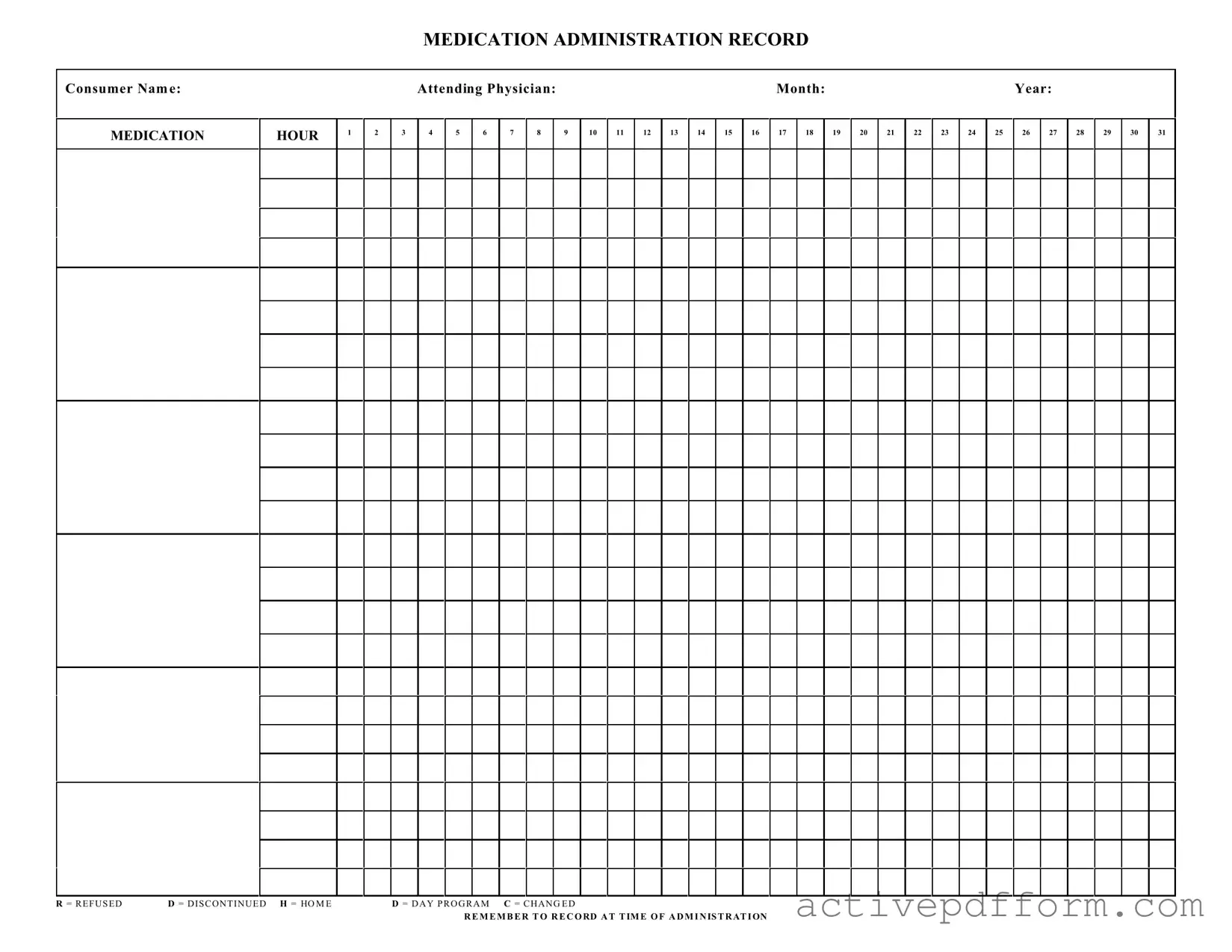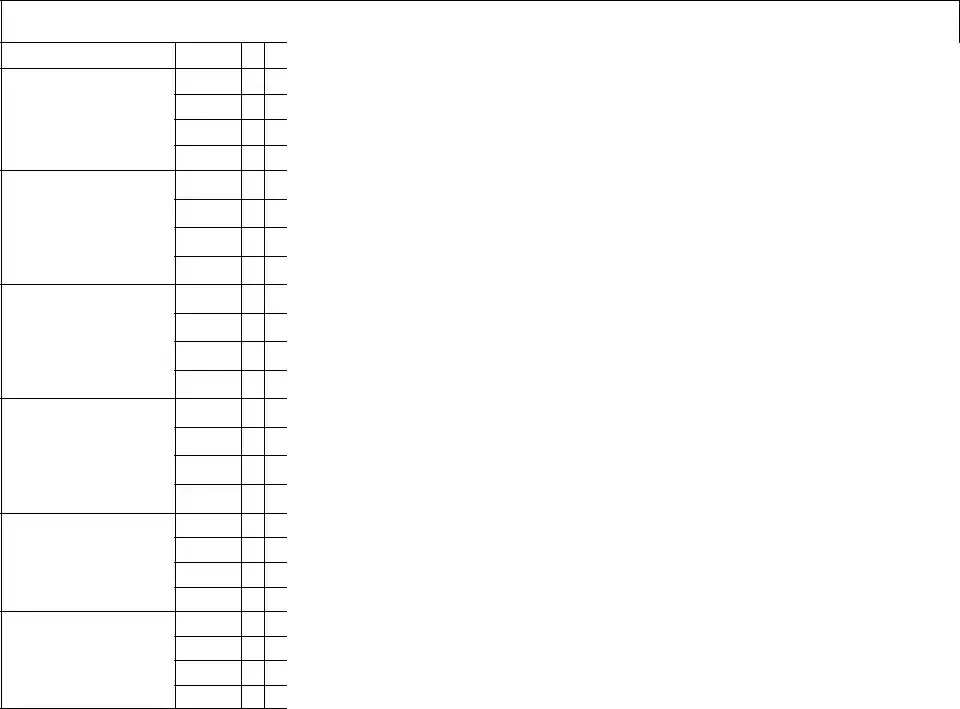What is the purpose of the Medication Administration Record Sheet?
The Medication Administration Record Sheet is designed to track the administration of medications to consumers. It ensures that each dose is given at the correct time and allows for accurate documentation of any changes or refusals. This record is essential for maintaining the health and safety of individuals receiving medication.
Who is responsible for filling out the Medication Administration Record Sheet?
The responsibility for completing the Medication Administration Record Sheet typically falls on the healthcare provider administering the medication. This may include nurses, caregivers, or other authorized personnel. It is crucial that the person filling out the sheet is trained and understands the medication administration process.
What information is required on the form?
The form requires several key pieces of information. This includes the consumer's name, the attending physician's name, the month and year of administration, and the specific hours when medications are given. Additionally, any notes regarding refusals, discontinued medications, or changes must be recorded accurately.
How should I record a refused medication?
If a consumer refuses to take their medication, the provider should mark the appropriate box with an "R" for refused. It is important to document the time of refusal and any relevant details regarding the situation. This helps ensure that the consumer's preferences and health needs are respected.
What does it mean to discontinue a medication on the form?
When a medication is discontinued, it means that it will no longer be administered to the consumer. The provider should mark the box with a "D" for discontinued. Additionally, any reasons for discontinuation should be noted, as this information can be vital for future medical decisions.
How do I handle changes in medication administration?
When there is a change in medication, the provider should mark the "C" box for changed. It is essential to record the new medication details, including dosage and schedule, to ensure accurate administration moving forward. Clear communication with the healthcare team is necessary to prevent any errors.
Why is it important to record the time of administration?
Recording the time of administration is crucial for several reasons. It helps ensure that medications are given at the correct intervals and allows healthcare providers to monitor the effectiveness of the treatment. Accurate timing can also prevent potential interactions with other medications or food.
What should I do if I make a mistake on the form?
If a mistake is made on the Medication Administration Record Sheet, it is important to correct it promptly. Cross out the error neatly and write the correct information next to it. Initial the correction to indicate that it was made by the authorized person. This maintains the integrity of the record while ensuring accurate documentation.

